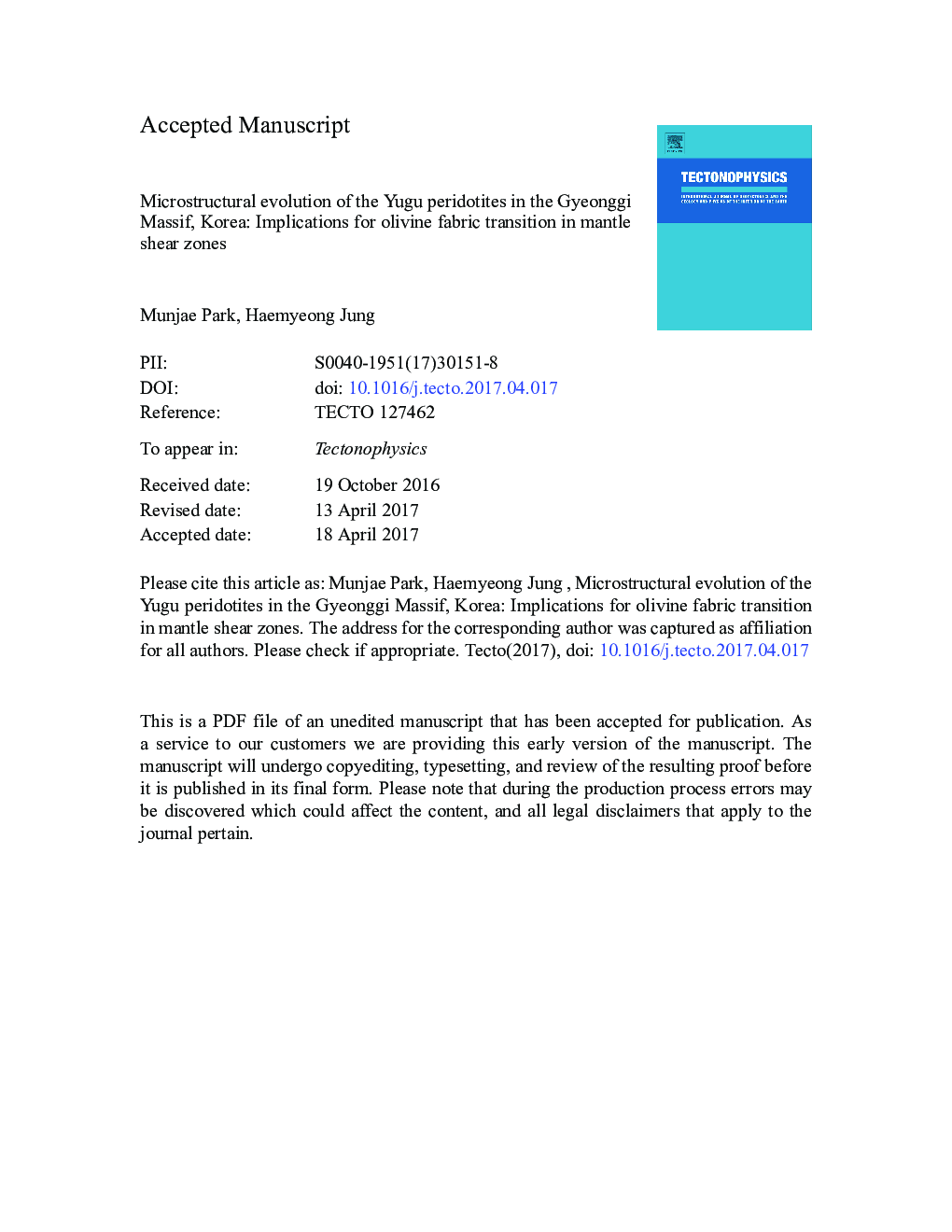| کد مقاله | کد نشریه | سال انتشار | مقاله انگلیسی | نسخه تمام متن |
|---|---|---|---|---|
| 5781669 | 1636696 | 2017 | 55 صفحه PDF | دانلود رایگان |
عنوان انگلیسی مقاله ISI
Microstructural evolution of the Yugu peridotites in the Gyeonggi Massif, Korea: Implications for olivine fabric transition in mantle shear zones
دانلود مقاله + سفارش ترجمه
دانلود مقاله ISI انگلیسی
رایگان برای ایرانیان
موضوعات مرتبط
مهندسی و علوم پایه
علوم زمین و سیارات
فرآیندهای سطح زمین
پیش نمایش صفحه اول مقاله

چکیده انگلیسی
Large-scale emplaced peridotite bodies may provide insights into plastic deformation process and tectonic evolution in the mantle shear zone. Due to the complexity of deformation microstructures and processes in natural mantle rocks, the evolution of pre-existing olivine fabrics is still not well understood. In this study, we examine well-preserved transitional characteristics of microstructures and olivine fabrics developed in a mantle shear zone from the Yugu peridotite body, the Gyeonggi Massif, Korean Peninsula. The Yugu peridotite body predominantly comprises spinel harzburgite together with minor lherzolite, dunite, and clinopyroxenite. We classified highly deformed peridotites into four textural types based on their microstructural characteristics: proto-mylonite; proto-mylonite to mylonite transition; mylonite; and ultra-mylonite. Olivine fabrics changed from A-type (proto-mylonite) via D-type (mylonite) to E-type (ultra-mylonite). Olivine fabric transition is interpreted as occurring under hydrous conditions at low temperature and high strain, because of characteristics such as Ti-clinohumite defects (and serpentine) and fluid inclusion trails in olivine, and a hydrous mineral (pargasite) in the matrix, especially in the ultra-mylonitic peridotites. Even though the ultra-mylonitic peridotites contained extremely small (24-30 μm) olivine neoblasts, the olivine fabrics showed a distinct (E-type) pattern rather than a random one. Analysis of the lattice preferred orientation strength, dislocation microstructures, recrystallized grain-size, and deformation mechanism maps of olivine suggest that the proto-mylonitic, mylonitic, and ultra-mylonitic peridotites were deformed by dislocation creep (A-type), dislocation-accommodated grain-boundary sliding (D-type), and combination of dislocation and diffusion creep (E-type), respectively.
ناشر
Database: Elsevier - ScienceDirect (ساینس دایرکت)
Journal: Tectonophysics - Volume 709, 10 July 2017, Pages 55-68
Journal: Tectonophysics - Volume 709, 10 July 2017, Pages 55-68
نویسندگان
Munjae Park, Haemyeong Jung,